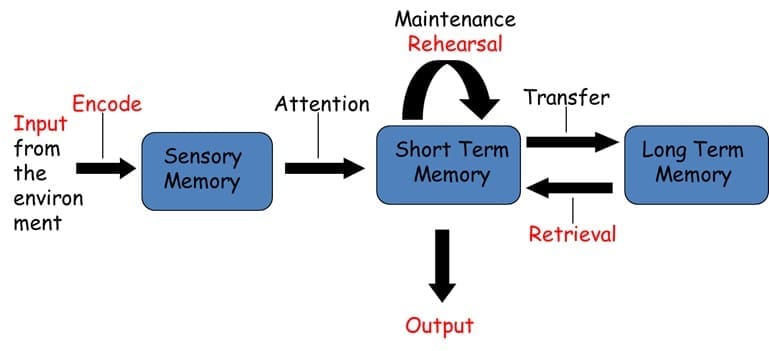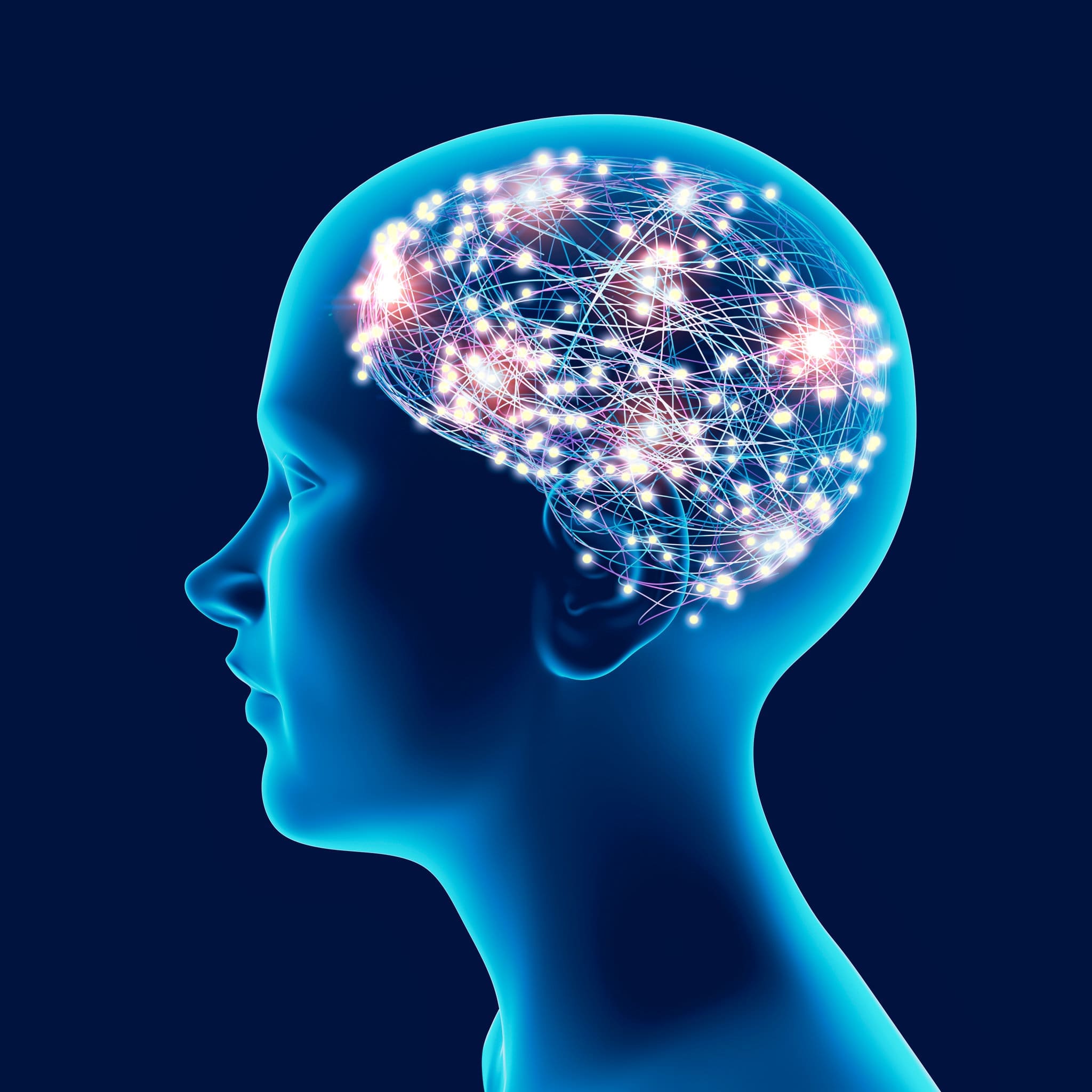In this post
The Multi-store Model of Memory, was proposed by Atkinson and Shiffrin in the 1960s in an attempt to show how memories are transferred and stored, as well as how they are retrieved again.
The model they proposed identifies three memory stores, each of which has specific functions:
- Sensory memory (also known as sensory register)
- Short-term memory
- Long-term memory.
According to this model, information passes from store to store in a linear way and this has been likened to a computer model where there are areas for input, processing and output. Emphasis is placed on memory being mostly affected by time and space, as shown in the diagram below:

The sensory register
The multi-store model identifies that human memory needs input and this comes from a person’s environment, where it enters the sensory register (also known as the sensory memory). This memory store holds all of the information that is happening around a person at the present time: sights, sounds, smells, tastes and anything being touched, for example, but only for a few short seconds. If attention is not paid to information in the sensory memory, it simply decays.
It is thought that a person pays attention to only 1% of what is happening in their environment and therefore enters the consciousness; this means that 99% of what is happening around someone never reaches their short-term memory because they are not paying attention to it.
Short-term memory
If attention is paid to something in the sensory register, it is processed and travels into the short-term memory. This store has a limited capacity and a limited duration. It is thought that the capacity of short-term memory is approximately seven items (such as names or numbers) and a duration of between 15 and 30 seconds.
Due to its limitations, information cannot be held in short-term memory for very long, and soon it either becomes displaced by new information entering the store or it decays because time has run out.
In order to hold information in short-term memory, individuals go through a process known as ‘rehearsal’, which is usually carried out by repeating something, such as a phone number or looking at something, such as a face, to try and remember it in the future. Rehearsal means that information is kept in a constant ‘loop’ in the short-term memory store and if it is still there after 30 seconds, it should successfully transfer to long-term memory.
Long-term memory
Long-term memory is the third store in the Multi-store Model of Memory. It is believed to have an unlimited capacity and an unlimited duration. What this means is that any information that is transferred into long-term memory should stay there for a person’s entire lifespan. It is thought that about 25% of information that reaches a person’s short-term memory is then transferred into their long-term memory.
Although information in long-term memory may well be stored there for a lifetime, this does not mean that a person will be able to automatically remember everything that it contains. Information needs to be retrieved from long-term memory and brought into short-term memory where it becomes output – such as saying a name or thinking about an event.
Sometimes, retrieval is not always possible because information in long-term memory is not immediately accessible. However, someone may be able to retrieve the information at a later time or if they are given an appropriate retrieval cue, which will help them to access the memory.

Primacy and recency effects
This model also helps to show how the primacy and recency effects work. What this suggests is that when given a list of information, people tend to remember the first and last items that it contains. The primacy effect occurs because the first information that someone hears has been rehearsed, encoded and transferred into long-term memory, from where it can be recalled. The recency effect occurs because this information is still available in short-term memory as it was the last thing that was heard.
Information in the middle is lost because it becomes displaced by new information or it decays because time has run out to transfer it into long-term memory.
- The multi-store model gives a very good understanding of the processes of short-term memory, which is useful because it enables further research on this particular aspect of memory
- The model is supported by studies such as that of HM, who was mentioned earlier in this section. The fact that his long-term memory was largely intact but his short-term memory was severely affected helps to give evidence that there are separate memory stores
- It helps to explain why the primacy and recency effects occur in most cases when individuals try to recall information presented to them.
Weaknesses of the theory
- The model cannot explain why some people have better memories than others or why some people are better at remembering specific types of information but not others, for example they are good at remembering names of countries but are not good at identifying faces
- Critics argue that the model is too simplistic and that short-term memory is much more complex than it is presented here. It is also argued that long-term memory is not just one store but consists of several stores that separate autobiographical events, procedures and general knowledge
- Not everyone needs to rehearse information for it to be transferred into long-term memory (we often remember things because they are interesting to us or because we found them funny). It is also argued that smells and sensations of touch do not need to be rehearsed in order to remember them.



